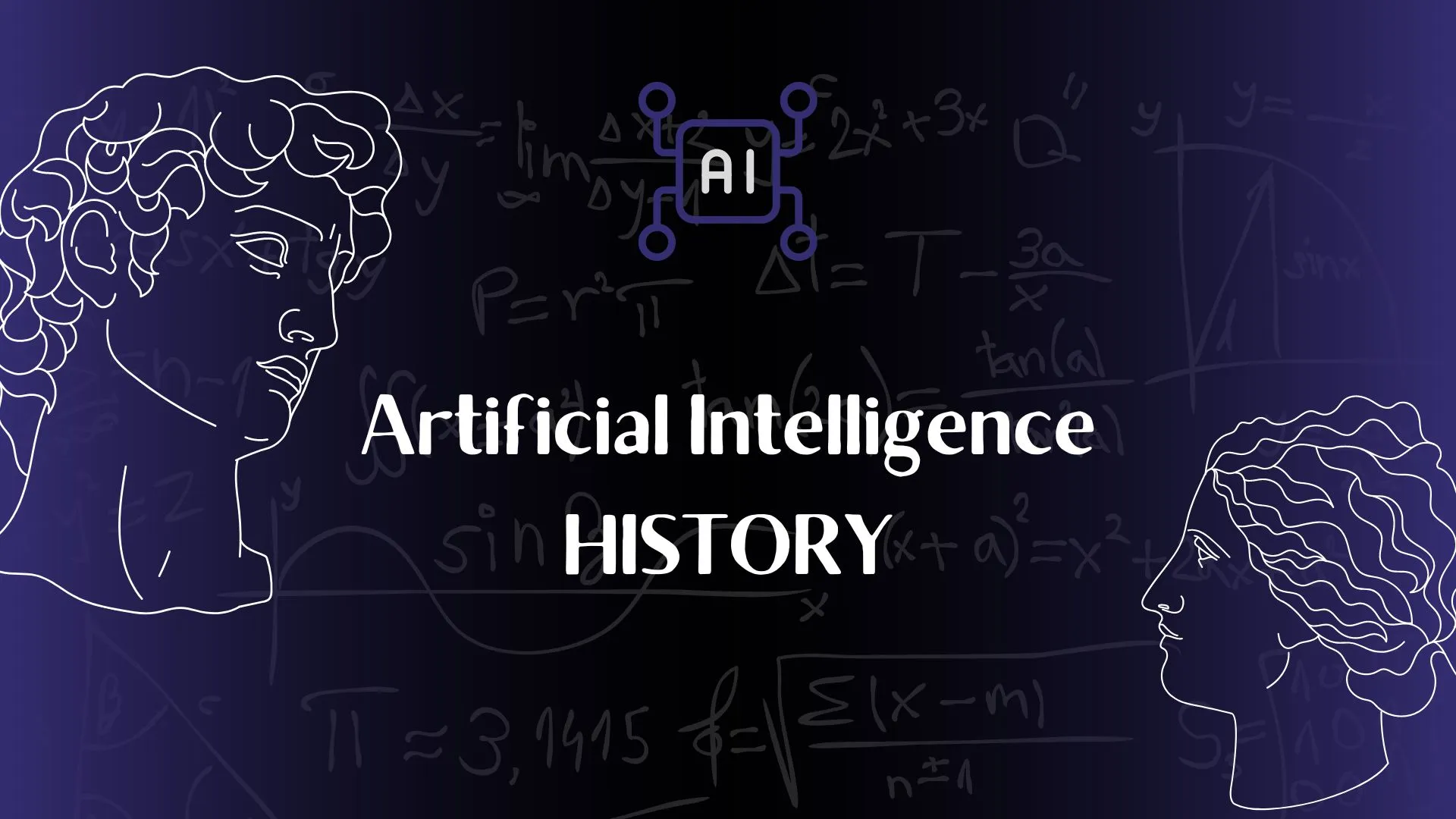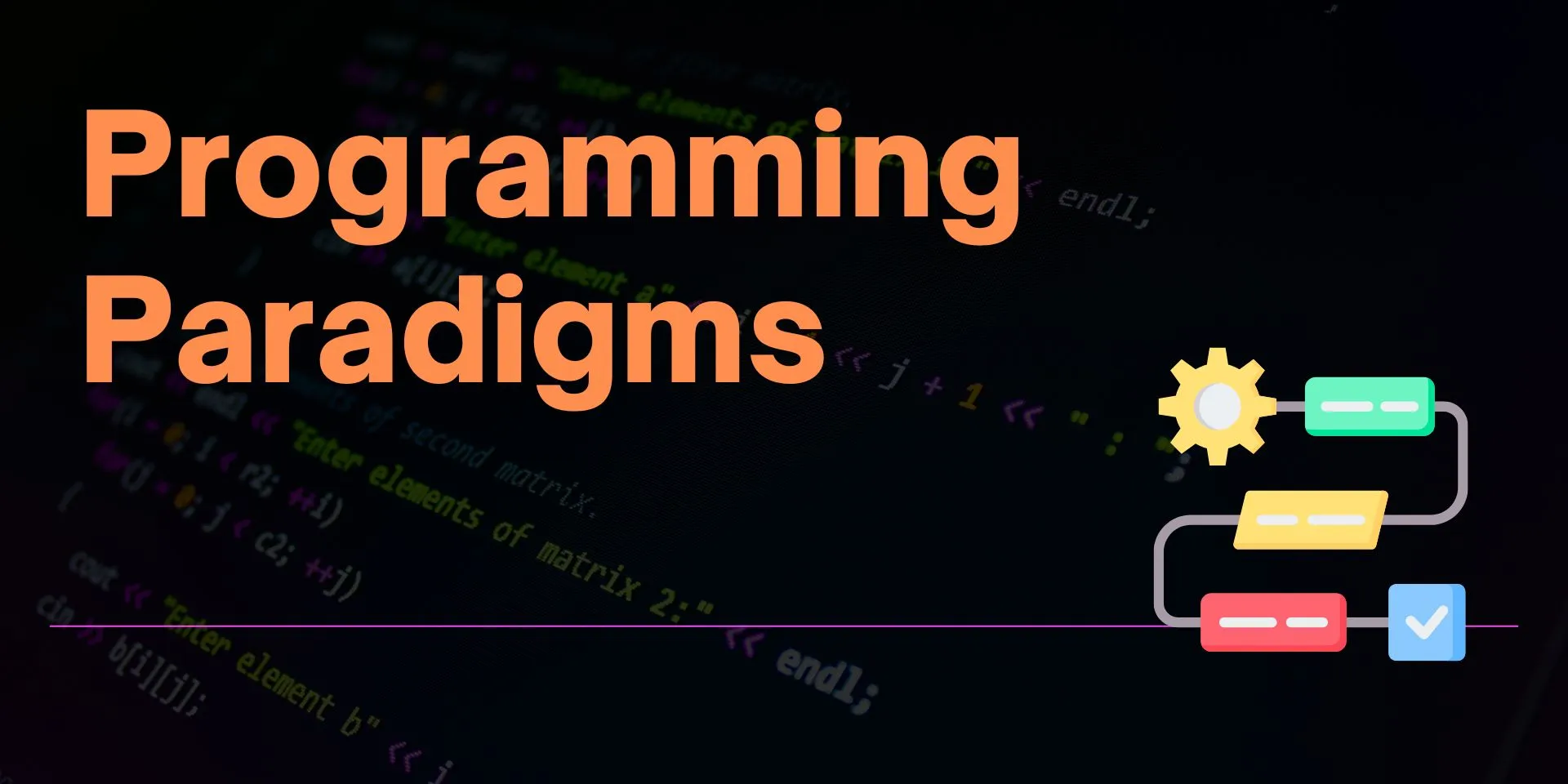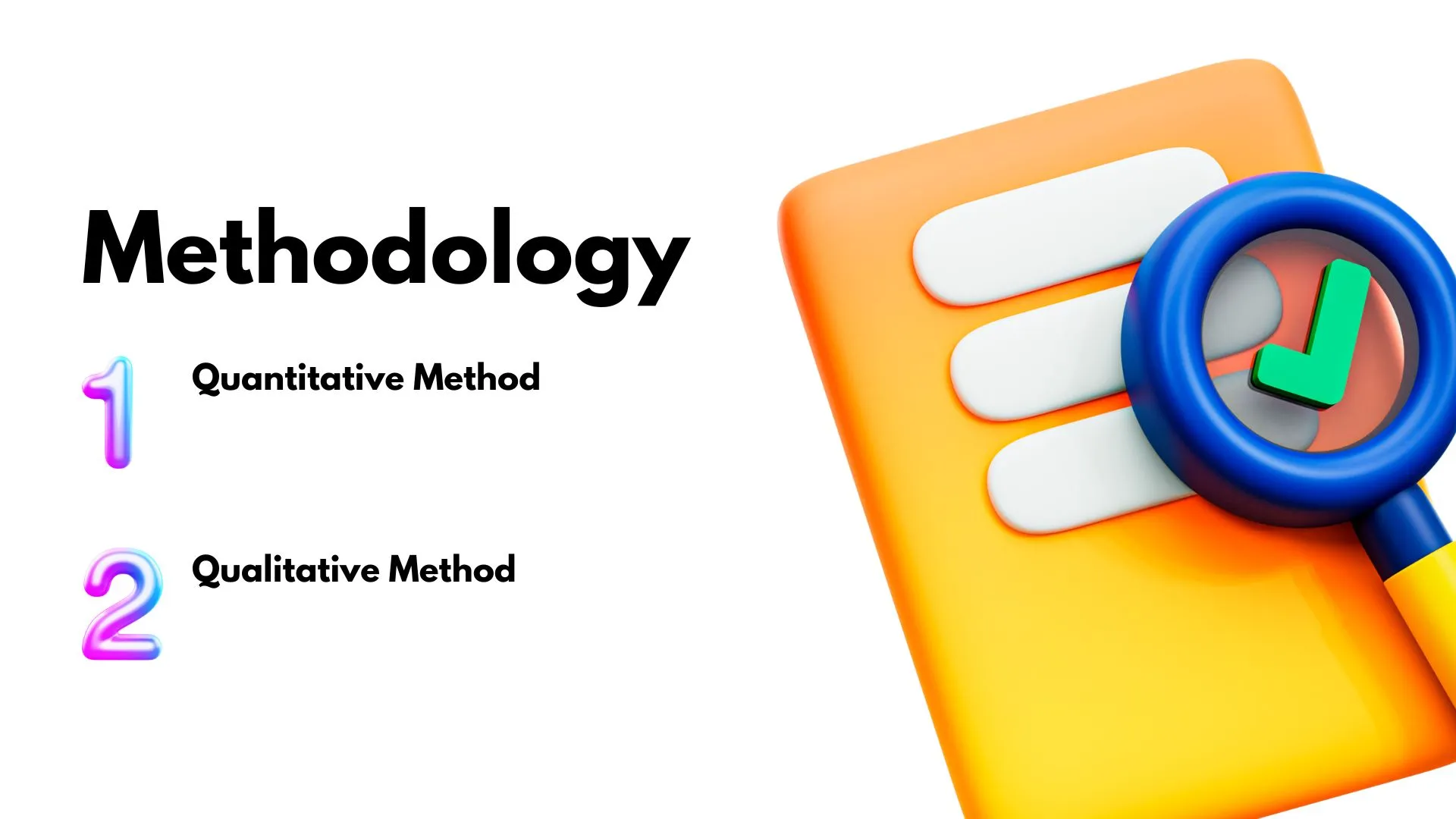Before embarking on the journey to learn about artificial intelligence (AI), it is essential to understand its history.
A strong grasp of the historical context provides a foundation for appreciating the development of AI concepts, methods, and technologies, as well as the challenges that researchers have faced and overcome throughout the years. By exploring the roots of AI and its evolution, learners can better appreciate the significance of breakthroughs and milestones, ultimately fostering a deeper understanding of the field’s complexities and the direction in which AI is headed.
Early Beginnings: Philosophy and Mathematics in the History of AI
The origins of artificial intelligence (AI) can be traced back to ancient philosophy and mathematics, with thinkers pondering the nature of human thought and reasoning. These early foundations laid the groundwork for the computational understanding of logic and the eventual birth of AI.
Ancient Philosophers and the Nature of Human Thought
The idea of creating artificial beings with human-like capabilities has fascinated humanity for centuries. In ancient Greece, philosophers like Aristotle and Plato explored the nature of human thought and reasoning. Aristotle, in particular, developed the principles of formal logic(1, 2), which would later become an essential aspect of AI. These early inquiries into human cognition and intelligence laid the foundation for future AI research.
Mathematical Logic and the Emergence of Formal Systems
In the 19th and early 20th centuries, the development of mathematical logic paved the way for the computational understanding of logic. George Boole, an English mathematician, introduced Boolean algebra, a form of algebra that deals with truth values (true and false) and logical operations. This system would later become the basis for digital electronics and computer science.
Gottlob Frege, a German philosopher and mathematician, expanded on Boole’s work and introduced the concept of predicate logic. Predicate logic, also known as first-order logic, allows for more complex relationships to be expressed and analyzed.
This form of logic would play a crucial role in the development of AI algorithms and expert systems.
Bertrand Russell and Alfred North Whitehead further advanced the field of mathematical logic with their seminal work, “Principia Mathematica”. This work aimed to derive all mathematical truths from a set of axioms and inference rules, showcasing the power of formal systems and their potential for AI research.
McCulloch and Pitts: Early Neural Networks
Warren McCulloch and Walter Pitts made a significant contribution to the history of AI with their 1943 paper, “A Logical Calculus of the Ideas Immanent in Nervous Activity”. In this work, they introduced the concept of artificial neurons, which were simplified models of biological neurons, and demonstrated how they could be combined to perform logical operations. This groundbreaking research marked the beginning of artificial neural networks, which would later evolve into the deep learning methods that play a crucial role in modern AI.
The Turing Test and Birth of Artificial Intelligence
The Turing Test and the birth of artificial intelligence (AI) as a scientific discipline mark a crucial turning point in the history of AI. This era saw the emergence of groundbreaking ideas and concepts that laid the foundation for the development of AI systems and technologies.
One of the most influential figures in the history of AI and computer science is British mathematician and computer scientist Alan Turing. In the 1930s, [Turing developed the concept of a theoretical machine](https://seop.illc.uva.nl/entries/turing-machine/, now known as the Turing machine, which could perform any algorithmic task given enough time and resources. This abstract model of computation would later serve as the basis for digital computers.
Turing’s work demonstrated that certain problems could be solved algorithmically, opening the door for the development of AI algorithms and systems. His work laid the foundation for the concept of computation and the eventual birth of AI as a scientific discipline.
The Turing Test: A Benchmark for AI
In 1950, Alan Turing published his seminal paper, “[Computing Machinery and Intelligence](https://academic.oup.com/mind/article/LIX/236/433/986238,” in which he proposed a test to determine whether a machine could exhibit intelligent behavior indistinguishable from that of a human.
This test, now known as the Turing Test, involves a human judge engaging in a natural language conversation with both
a human and a machine. If the judge cannot reliably distinguish between the human and machine responses,
the machine is considered to have passed the test, exhibiting human-like intelligence.
The Turing Test has since become a benchmark for AI and a source of inspiration for researchers striving to develop
machines capable of mimicking human intelligence.
Though many argue that the test has limitations, it nonetheless marks a significant milestone in the history of AI, sparking a wave of research and development.
The Dartmouth Conference: Birth of AI as a Field
The birth of Articial Intelligence as a formal field of research is often attributed to the Dartmouth Conference held in 1956. Organized by John McCarthy, Marvin Minsky, Nathaniel Rochester, and Claude Shannon, the conference brought together researchers from various disciplines who shared an interest in understanding and replicating human intelligence in machines.
During the conference, the term “artificial intelligence” was coined by McCarthy, and the participants laid out the
ambitious goals of AI research. They believed that machines could be made to simulate human intelligence,
including learning, problem-solving, and language understanding.
This event marked the beginning of AI as a distinct field, with researchers working on a shared set of problems and goals.
Early AI Research: Pioneering Projects and Breakthroughs of the 1950s-1960s
The 1950s and 1960s marked an era of pioneering research and breakthroughs in the field of artificial intelligence (AI). During this period, researchers developed early AI systems and algorithms, making significant advancements in natural language processing, machine learning, and robotics.
Natural Language Processing: ELIZA and SHRDLU
One of the key areas of AI research in the 1950s and 1960s was natural language processing (NLP), focusing on the development of systems capable of understanding and generating human language.
In 1964, Joseph Weizenbaum at MIT developed ELIZA, a computer program that simulated conversation using pattern matching
and substitution techniques. While ELIZA’s understanding of language was quite limited, it demonstrated the potential
for AI systems to interact with humans using natural language.
Another notable NLP project from this era was SHRDLU, developed by Terry Winograd at MIT in 1968-1970. SHRDLU was a
more advanced NLP system, capable of understanding and responding to commands in a restricted version of English.
It could manipulate objects in a virtual “blocks world,” demonstrating an early form of AI reasoning and problem-solving.
Machine Learning: Perceptrons and the Nearest Neighbor Algorithm
Machine learning, a subfield of AI that focuses on the development of algorithms that can learn from and make predictions based on data, also saw significant advancements during the 1950s and 1960s.
In 1957, Frank Rosenblatt introduced the perceptron, an early artificial neural network that could
learn to classify patterns through supervised learning.
The perceptron laid the groundwork for future research in neural networks and deep learning.
Another important development in machine learning was the nearest neighbor algorithm,
introduced by Evelyn Fix and Joseph Hodges in 1951. This simple algorithm laid the foundation for
instance-based learning and classification techniques, which are still widely used in machine learning today.
Robotics: Shakey the Robot and the Stanford Arm
The field of robotics, closely related to AI, also witnessed significant progress during this era.
One of the first AI-powered robots, Shakey the Robot, was developed at the Stanford Research Institute (SRI)
in the late 1960s.
Shakey was designed to navigate and interact with its environment using a combination of planning, reasoning, and perception algorithms. This project showcased the potential for AI systems to operate autonomously in the real world.
Another milestone in robotics was the development of the Stanford Arm by Victor Scheinman in 1969.
The Stanford Arm was one of the first computer-controlled robotic arms, capable of performing a variety
of tasks with precision.
This development revolutionized robotics and laid the foundation for future advancements in automation and industrial robotics.
AI in the Golden Age: 1960s-1970s
The 1960s and 1970s are often regarded as the golden age of artificial intelligence (AI), characterized by optimism, significant funding, and rapid advancements in the field.
During this era, AI researchers developed influential techniques, including knowledge representation and search algorithms, and made notable progress in machine learning, robotics, and expert systems.
Knowledge Representation and Search Algorithms
A key focus of AI research during the golden age was knowledge representation and reasoning, which involved developing ways for AI systems to store, manipulate, and reason with information.
One influential project from this era was Edward Feigenbaum and Joshua Lederberg’s DENDRAL,
developed in the 1960s at Stanford University. DENDRAL was an expert system designed to predict chemical
structures using mass spectrometry data. It demonstrated the potential of AI systems to reason and solve
problems in specific domains, laying the groundwork for future expert systems and knowledge-based AI.
Another critical area of research during this era was search algorithms, which play a central role in AI problem-solving.
In 1968, Richard Korf developed the A* search algorithm, a widely-used pathfinding and graph traversal
algorithm that remains a cornerstone of AI search techniques today.
Machine Learning: Decision Trees and Genetic Algorithms
Machine learning continued to advance during the golden age of AI, with researchers developing new
methods and techniques. In 1966, Ross Quinlan introduced the ID3 algorithm, an early decision tree learning
method.
Decision trees became a popular approach for classification and regression tasks in machine learning, providing a simple, interpretable model for data-driven decision-making.
Another significant development in machine learning during this era was the introduction of
genetic algorithms by John Holland in the early 1970s. Genetic algorithms, inspired by the process
of natural selection, are optimization techniques used to find approximate solutions to complex problems.
They remain a popular method in AI, particularly for optimization and search tasks.
Robotics: WABOT-1 and the Birth of Computer Vision
The golden age of AI saw significant advancements in robotics, with researchers developing more advanced,
intelligent robots. In 1973, researchers at Waseda University in Japan introduced WABOT-1, one of the
first full-scale humanoid robots. WABOT-1 could walk, communicate in a limited form of Japanese,
and perform simple tasks, marking a milestone in robotics and AI research.
Another major breakthrough during this era was the birth of computer vision, which focused on developing AI
systems capable of interpreting and understanding visual information.
In 1966, MIT professor Seymour Papert launched the Summer Vision Project, an ambitious attempt to
develop a computer system that could recognize and identify objects in images. While the project’s goals were not fully
realized, it sparked interest and research in computer vision, which has since become a crucial aspect of AI.
The AI Winter: Challenges and Resilience in the 1980s - Early 1990s
The 1980s and early 1990s marked a period of reduced funding, skepticism, and slower progress in the field of artificial intelligence (AI), often referred to as the AI winter.
This era saw several setbacks, as the limitations of early AI techniques became apparent and the ambitious goals of AI pioneers remained unfulfilled. However, this period also witnessed the development of new AI approaches and the resilience of researchers who continued to push the field forward.
The Lighthill Report and Funding Cuts
The AI winter was precipitated, in part, by the Lighthill Report, published in the United Kingdom in 1973.
The report, authored by Sir James Lighthill, criticized the state of AI research, arguing that it had failed to achieve its ambitious goals and that further funding was unjustified. As a result, AI research funding was significantly reduced in the UK and subsequently in the United States, contributing to the slowdown in AI progress during this era.
Expert Systems and the Rise of Connectionism
Despite the challenges faced during the AI winter, researchers continued to explore new approaches and techniques.One significant development was the refinement and commercialization of expert systems, which are AI programs designed to emulate the decision-making abilities of a human expert in a specific domain.
Expert systems like XCON and MYCIN gained popularity in the 1980s, demonstrating the practical applications of AI in
areas such as medical diagnosis and manufacturing.
During the AI winter, connectionism, an alternative approach to AI based on artificial neural networks, gained traction.
Researchers like Geoffrey Hinton, David Rumelhart, and Ronald Williams developed backpropagation, an algorithm for
training multi-layer neural networks, which allowed for the more effective training of deep learning models.
This approach laid the groundwork for the resurgence of neural networks and the emergence of deep learning in the late 1990s
and 2000s.
Natural Language Processing and Robotics
Despite the funding cuts and skepticism during the AI winter, research in natural language processing (NLP) and robotics continued to advance. In the 1980s, researchers developed the first statistical approaches to NLP, moving away from the rule-based systems of earlier eras.
The introduction of the Hidden Markov Model (HMM) by researchers such as Leonard Baum and Lloyd Welch provided a powerful
tool for modeling sequential data, which would later become crucial in fields like speech recognition and machine translation.
In robotics, the 1980s and early 1990s saw the development of more advanced robots and the emergence of new techniques in
robot control. Rodney Brooks at MIT developed the subsumption architecture, an alternative approach to robot control that
emphasized simple, reactive behaviors over complex planning. This approach would later influence the development of more
robust and adaptive robotic systems.
Revival of AI: Breakthroughs and Innovations of the Late 1990s - 2000s
The late 1990s and 2000s marked a resurgence in the field of artificial intelligence (AI), as researchers made significant breakthroughs and funding gradually increased.
This era witnessed the rise of machine learning, the development of advanced robotics, and the advent of the internet, which provided AI researchers with vast amounts of data and new opportunities for collaboration.
Machine Learning: Support Vector Machines and Deep Learning
Machine learning continued to evolve during the AI revival, with researchers developing new algorithms and techniques.
In the 1990s, Vladimir Vapnik and Corinna Cortes introduced the support vector machine (SVM), a powerful machine learning
algorithm for classification and regression tasks. SVMs gained popularity for their ability to handle high-dimensional
data and their strong theoretical foundation, becoming a widely-used method in AI research.
Another significant development during this era was the resurgence of deep learning, driven by advances in artificial neural networks and the increasing availability of computational power.
In 2006, Geoffrey Hinton and his collaborators introduced the concept of deep belief networks, which marked a significant
milestone in the development of deep learning techniques. These breakthroughs laid the groundwork for the modern deep learning
revolution and the rapid advancements in AI that followed.
The Internet and Big Data
The advent of the internet and the increasing availability of large-scale datasets played a crucial role in the revival of AI. As more data became accessible, AI researchers had the opportunity to train more sophisticated models and develop new applications.
In 1999, Sergey Brin and Larry Page launched Google, a search engine that utilized AI techniques like PageRank to revolutionize
the way people accessed and navigated the internet. Google’s success demonstrated the potential of AI in practical,
real-world applications and inspired further research and innovation.
Advanced Robotics: Autonomous Vehicles and Humanoid Robots
The late 1990s and 2000s also saw significant advancements in robotics, with researchers developing more advanced,
intelligent robots. In 2005, Stanford University’s robotic Volkswagen Touareg, named “Stanley,” won the DARPA Grand Challenge,
a competition designed to spur the development of autonomous vehicles.
Stanley’s victory showcased the potential of AI in enabling self-driving cars and triggered a surge of interest in autonomous vehicle research.
During this era, humanoid robots also made significant strides. In 2000, Honda introduced ASIMO, an advanced humanoid robot
capable of walking, running, and performing complex tasks. ASIMO’s impressive capabilities captured public imagination and
demonstrated the potential of robotics in various applications, from healthcare to entertainment.
Deep Learning Renaissance: Transformative Advancements in the 2010s
The 2010s marked a turning point in the field of artificial intelligence (AI), as the deep learning renaissance brought about transformative advancements and unprecedented capabilities. Driven by increased computational power, the availability of massive datasets, and significant algorithmic improvements, deep learning techniques allowed AI researchers to achieve remarkable progress in areas such as image and speech recognition, natural language processing, and reinforcement learning.
Convolutional Neural Networks and Image Recognition
In 2012, a groundbreaking moment occurred when a deep learning model called AlexNet, developed by Alex Krizhevsky, Ilya Sutskever, and Geoffrey Hinton,
won the ImageNet Large Scale Visual Recognition Challenge (ILSVRC) by a significant margin. AlexNet, a convolutional neural network (CNN),
demonstrated the power of deep learning in image recognition and sparked a renewed interest in AI research.
CNNs have since become a cornerstone of computer vision, enabling applications such as facial recognition, autonomous vehicles, and medical image analysis.
Recurrent Neural Networks and Natural Language Processing
Deep learning also revolutionized natural language processing (NLP) during the 2010s. Recurrent neural networks (RNNs),
particularly long short-term memory (LSTM) networks developed by Sepp Hochreiter and Jürgen Schmidhuber in the 1990s,
gained prominence for their ability to model sequential data, such as text and speech.
In 2013, Google launched its deep learning-based speech recognition system, which significantly improved the accuracy of voice commands and transcription.
Later in the decade, researchers developed transformer-based models, such as OpenAI’s GPT and Google’s BERT, which set new benchmarks in various NLP tasks. These models have facilitated advancements in machine translation, sentiment analysis, and text generation, enabling AI systems to understand and generate human-like text.
Reinforcement Learning and AlphaGo
Reinforcement learning, a subfield of AI that focuses on training agents to make decisions in complex environments,
experienced a major breakthrough in 2016. DeepMind, a British AI company acquired by Google, developed AlphaGo,
an AI system that defeated the world champion Go player, Lee Sedol, in a five-game match. AlphaGo’s victory marked a
significant milestone in AI research, as it demonstrated the potential of deep reinforcement learning to tackle complex,
strategic tasks.
Autonomous Vehicles and Robotics
The deep learning renaissance further accelerated the development of autonomous vehicles and advanced robotics. Companies like Tesla, Waymo, and NVIDIA made significant strides in self-driving car technology, integrating AI systems into their vehicles to enable autonomous navigation and decision-making.
In robotics, Boston Dynamics showcased remarkable progress with their humanoid and quadruped robots, such as Atlas and Spot,
which can navigate complex terrain and perform tasks with increased dexterity and autonomy.
Modern AI: Present Day and Beyond – A Glimpse into the Future of Artificial Intelligence
As we enter a new era of AI development, the landscape of artificial intelligence is evolving at an unprecedented pace.
Groundbreaking innovations in machine learning, robotics, and data science are shaping our world and expanding the possibilities for AI applications.
OpenAI and GPT-3
One of the most notable developments in recent AI history is the emergence of OpenAI, an organization founded in 2015 by Elon Musk, Sam Altman, and other tech industry leaders. OpenAI is dedicated to advancing digital intelligence for the benefit of humanity and has produced groundbreaking research in AI and deep learning.
In 2020, OpenAI released GPT-3, the third iteration of its generative pre-trained transformer model. GPT-3 is a
state-of-the-art language model, capable of generating human-like text and performing a wide range of NLP tasks with
unprecedented accuracy.
The release of GPT-3 has captured the imagination of AI researchers and developers, showcasing the potential of large-scale language models in applications such as chatbots, content generation, and virtual assistants.
AI Ethics and Responsible Development
As AI technologies become more sophisticated and integrated into our daily lives, ethical considerations and responsible development are increasingly important. Concerns surrounding privacy, data security, and the potential for bias in AI systems have led to a growing emphasis on AI ethics and fairness.
Organizations like OpenAI, the Partnership on AI, and the AI Ethics Institute are working to establish guidelines and best practices for AI development, ensuring that AI technologies are aligned with human values and used responsibly. This focus on AI ethics is shaping the future of the field, as researchers and developers strive to create AI systems that are not only powerful but also equitable and trustworthy.
AI in Healthcare and Drug Discovery
AI’s potential to revolutionize healthcare has become increasingly apparent in recent years. Machine learning algorithms have been developed to analyze medical images, predict disease outcomes, and even assist in drug discovery.
Companies like DeepMind and Tempus are harnessing the power of AI to accelerate the development of new treatments and therapies, improving patient outcomes and saving lives.
In response to the COVID-19 pandemic, AI played a crucial role in identifying potential drug candidates and optimizing vaccine development, demonstrating the potential of AI in addressing global health challenges and shaping the future of healthcare.
Robotics and Automation
The modern era of AI has also seen rapid advancements in robotics and automation. AI-powered robots are increasingly being deployed in industries such as manufacturing, logistics, and agriculture, improving efficiency and reducing the need for manual labor.
Autonomous vehicles are becoming more sophisticated, with companies like Waymo, Tesla, and Cruise testing self-driving cars on public roads and pushing the boundaries of AI-powered transportation.
Moreover, AI-enabled home automation systems, like Amazon’s Alexa and Google Home, are becoming commonplace, changing the way we interact with technology in our daily lives.
Final considerations: Reflecting on the Evolution of AI and Envisioning the Future
Throughout the history of artificial intelligence, we have witnessed incredible advancements, transformative discoveries, and periods of both optimism and skepticism. From the early beginnings of philosophy and mathematics to the modern era of deep learning and ethical considerations, AI has evolved into a powerful and transformative technology that continues to shape our world.
Key Takeaways
Early Beginnings: Philosophy and Mathematics - The foundations of AI were laid through the exploration of logical reasoning, formal systems, and the nature of intelligence, culminating in groundbreaking work by thinkers like Alan Turing, Warren McCulloch, and Walter Pitts.
The Turing Test and Birth of AI - Alan Turing’s seminal work on the concept of machine intelligence and the Turing Test provided a benchmark for AI research and inspired the pursuit of developing intelligent machines.
Early AI Research: 1950s - 1960s - Pioneering researchers such as Marvin Minsky, John McCarthy, and Claude Shannon established the field of AI as an academic discipline, leading to the development of early AI programs and the foundation of key AI concepts.
AI in the Golden Age: 1960s - 1970s - Government funding and research advancements in areas like natural language processing, robotics, and expert systems fueled optimism and growth in the field of AI.
The AI Winter: 1980s - Early 1990s - Challenges in scaling AI systems and diminishing financial support led to a period of disillusionment and reduced progress in the field.
Revival of AI: Late 1990s - 2000s - The emergence of machine learning, data-driven approaches, and the development of the World Wide Web reignited interest in AI research and opened the door for new applications.
Deep Learning Renaissance: 2010s - The convergence of computational power, big data, and innovative algorithms resulted in a resurgence of AI, with deep learning techniques revolutionizing fields like computer vision, natural language processing, and reinforcement learning.
Modern AI: Present Day and Beyond - The current era of AI is characterized by rapid advancements in technology, an increasing focus on AI ethics, and the integration of AI into various aspects of our daily lives, from healthcare and drug discovery to robotics and automation.
Envisioning the Future
As we look towards the future of AI, it is clear that this dynamic field will continue to evolve and impact our world in profound ways. The lessons learned from the history of AI, including the importance of interdisciplinary collaboration, the potential for transformative breakthroughs, and the need for ethical considerations, will guide researchers and developers as they push the boundaries of what is possible with artificial intelligence.
As AI technologies advance and become more sophisticated, we can expect to see even greater integration of AI into our daily lives, with new applications emerging in areas such as healthcare, transportation, communication, and entertainment.
By understanding the rich history of AI and the factors that have shaped its development, we can better anticipate future challenges, opportunities, and the transformative potential of this powerful technology.






Comments